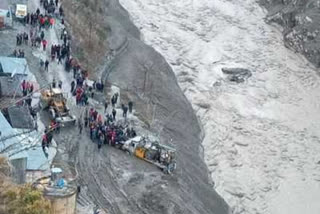Hyderabad: The Uttarakhand tragedy is a result of the failure to draw lessons from the earlier devastations left behind by the fury of the otherwise benign and beautiful mother nature.
Uttarakhand witnessed flash floods when a glaciated slope in Chamoli district slid into the Dhauli Ganga river on February 7. The 13.32 MW Rishi Ganga hydropower project was completely washed away in the resultant floods. Heavy damage was also caused to the 480-megawatt NTPC power station.
The sudden flood swept away seven bridges, cutting the connectivity to 17 villages. At least 20 persons died and around 200 went missing as a result of this calamity.
After the Himalayan Tsunami of the year 2013, in which 6,000 devotees died and the lives of several thousand were affected, this is yet another major calamity in Uttarakhand. At that time seven years ago, the tragedy was caused when a glacial lake had burst. However, experts opine that the causes behind the present tragedy need to be studied deeply.
Himalayan glacial slides are common in the monsoon season. The present burst of a glacier at the height of winter remains unprecedented.
In the year 2019, a study based on the analysis of satellite data of the past four decades had confirmed the fact that glaciers are receding at an accelerated pace as a result of rising global warming. Earlier, the temperature of glacial ice used to range from minus 6 to minus 20 degrees Celsius. As a result of the rising global warming, the temperature has risen to minus 2 degrees celsius. Intensified human activities in the Himalayan region are further exposing the region to unimaginable calamities.
There is nothing to find fault with Uttarakhand's ambition to be a surplus power state. However, the wanton destruction of the environment in the process of exploiting the opportunities to generate hydropower is proving calamitous.
